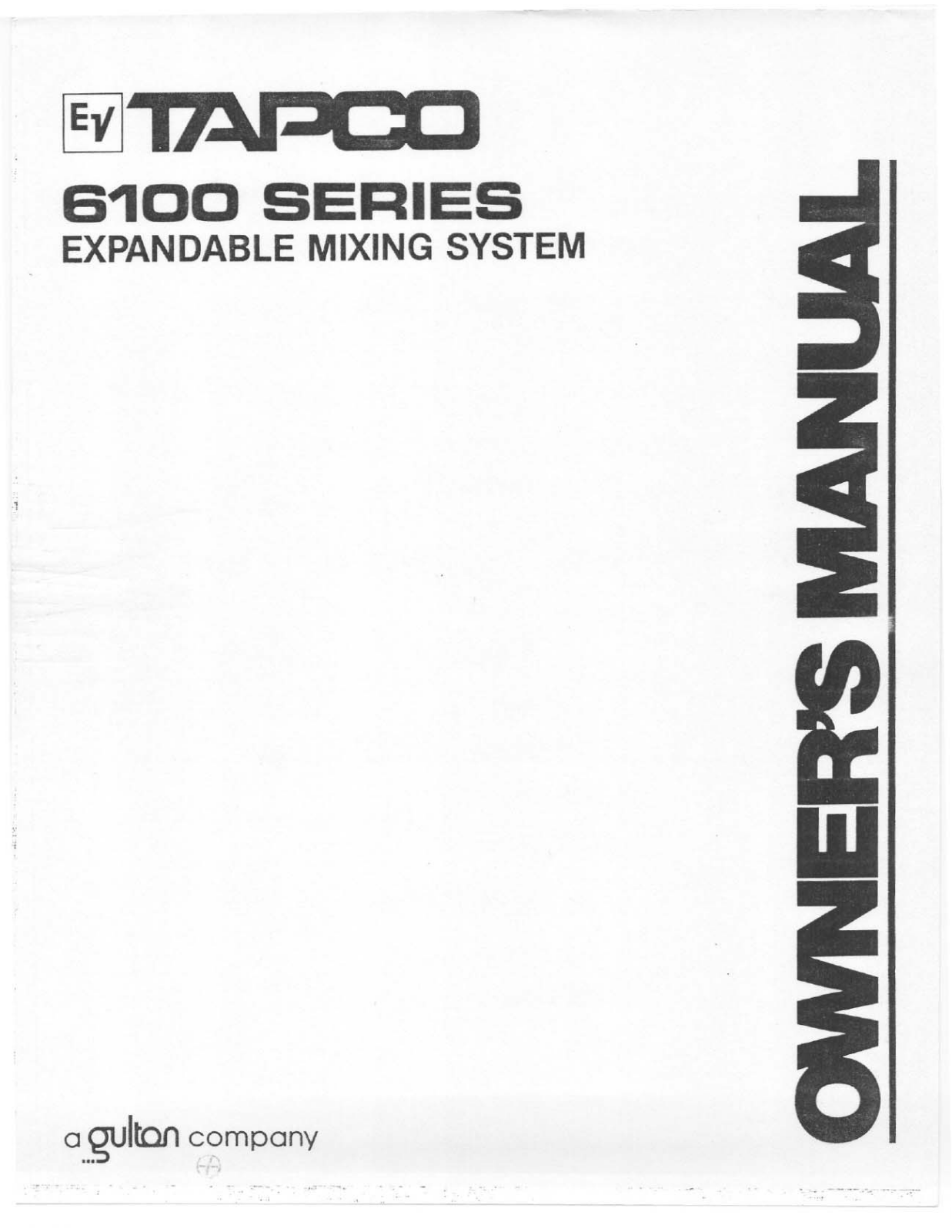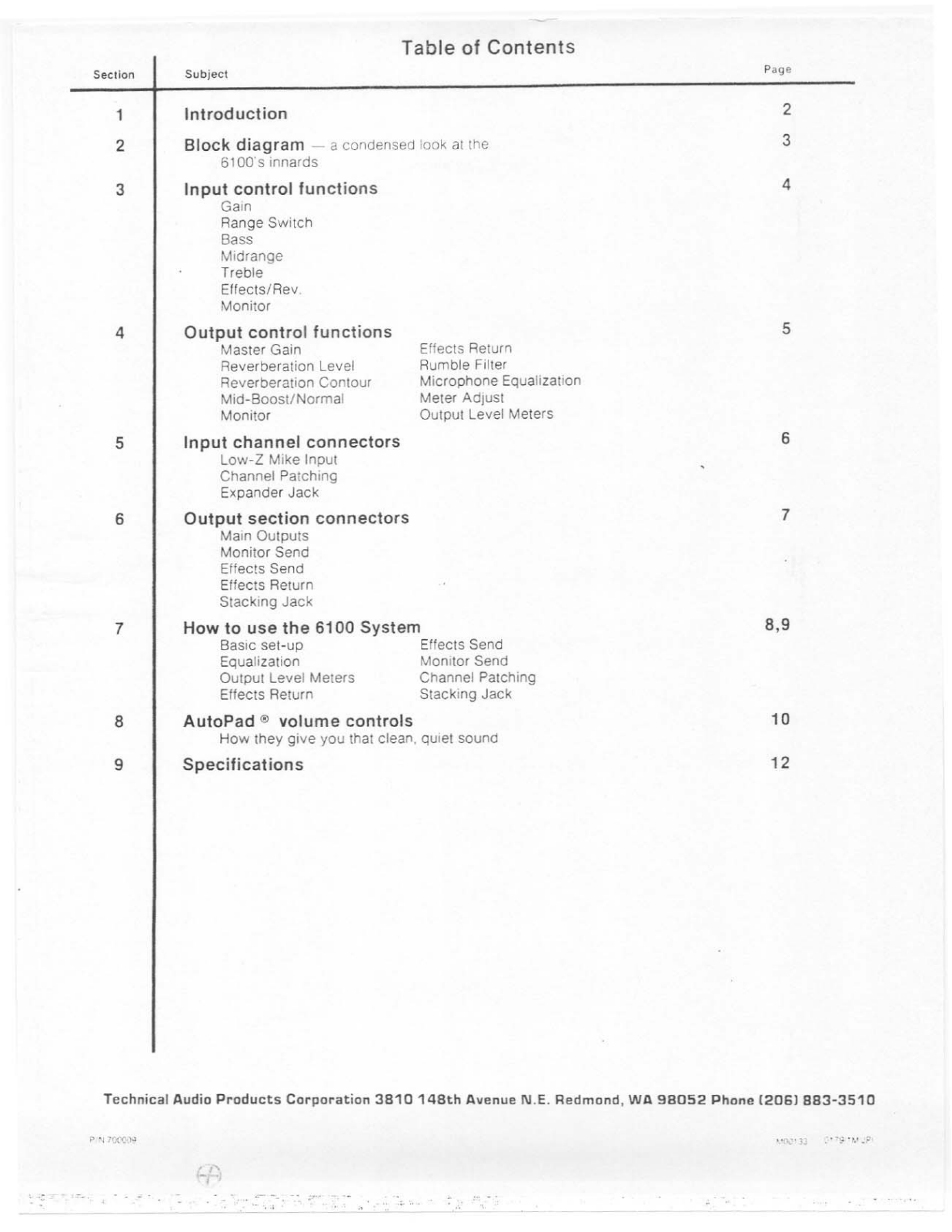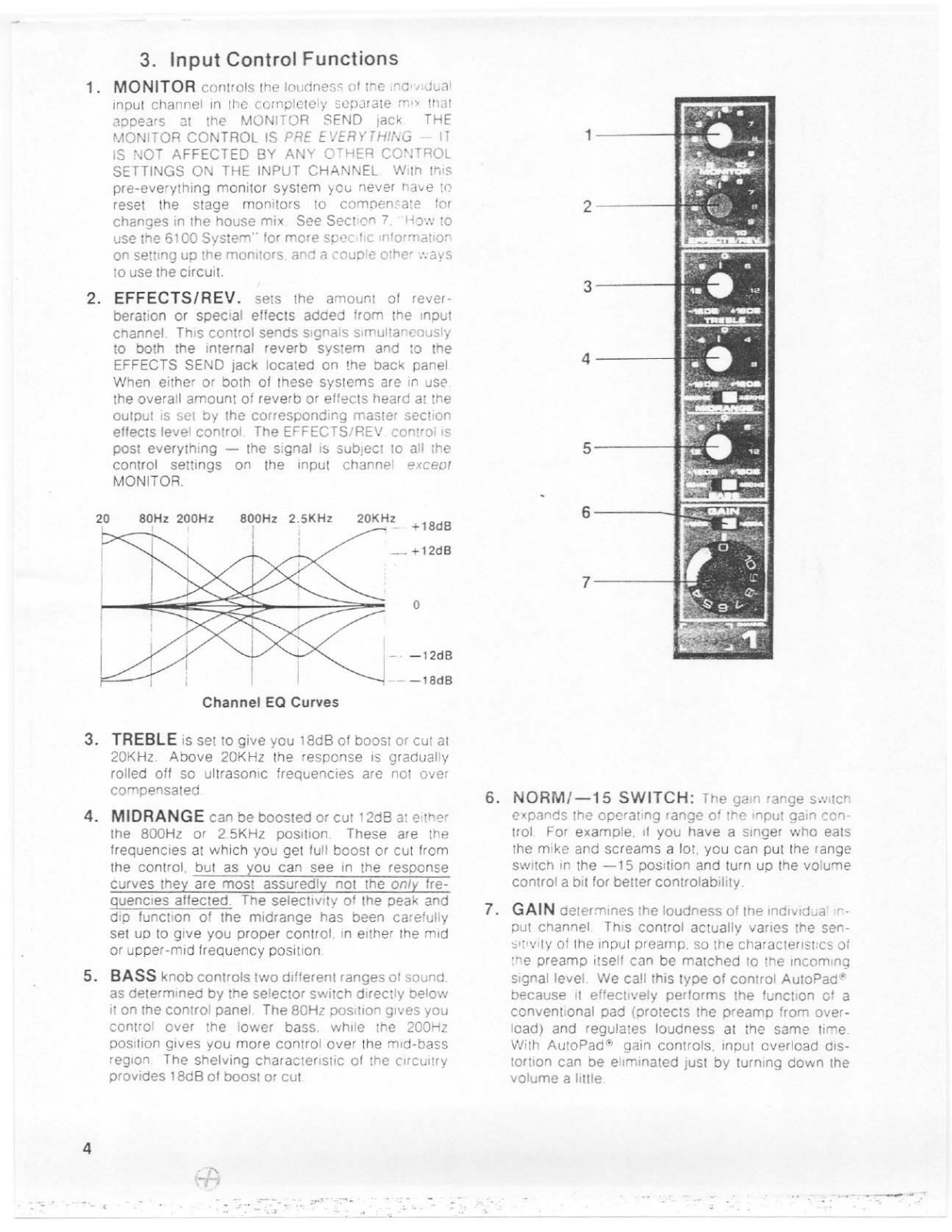Specifications and Main Features
- The frequency response spans between 15Hz and 40KHz, deviating a maximum of 1dB
- Total Harmonic Distortion (THD) is limited to below 0.08% for a frequency of 1KHz with an input of 30mV RMS and an output of 5V RMS.
- The equivalent Input Noise varies:
- 6100EB/6100RB: —128dBV at 10mV RMS input, 1V RMS output, 20Hz to 20KHz bandwidth and a 150 ohm source
- 6100RA/6100EA: —126dBV
- The output noise measured is 22uV while the residual master is off.
- The SNR measured ranges between 76dB with respect to an input cutout of -50dBm with a reference level of 20dB to 20KHz unweighted.
- The gain available excceeds 90dB.
- The maximum output level achieved for a 5K ohm load is 9 volts RMS
- The maximum output level achieved for a 600 ohm load is +17dBm
- The impedance measured is 130 Ohm
- There are 6 micro units and 8 expander units.
- The Microphone impedance matching isn’t fixed and can vary anywhere between 30 and 600 ohm
- The Input transformer type constructed is specifically for B series with a large high nickel alloy.
- The B series did perform better with common mode suppression reaching upto 105dB
- At 1Mhz the RF interference filter is able to measure -28dB and -55dB at 27Mhz but a slightly lower performance was achieved at CB frequency.
- The bass control can be set to 12dB with a ranging frequency of 80hz to 200hz with a topping of 18dB shelving.
- The midrange frequency oscillates between 800Hz and 2.5KHz with tilt frequencies set to +10molars.
- The Treble between 10khz to 18khz ranges.
- Rumble filter: at 100Hz, a cut of -6dB and the slope is 6dB per octave.
- Monitor system: self contained stage monitor pre sub-mixer with specifications for noise as well as signal to noise ratio.
- Effects system: we have internal reverb or external effects processed post EQ into a sub mixer with standard output specs similar to those of the main mixers.
Frequently Asked Questions
Q1: What is the main scope of the TAPCO 6100 series mixing system?
A1: The TAPCO 6100 series mixing system is appropriate for use in sound reinforcement of live music, as it provides sound control and signal routing capabilities.
Q2: What is the number of input channels in the 6100 master unit?
A2: The number of input channels in 6100 master’s unit is 6 and there is an expander that gives 8 more channels.
Q3: Which sound controller apparatus are provided in the mixer?
A3: The mixer has volume control (AutoPad®), bass, mid-range, treble, effects/reverb send and independent monitor controls for each channel.
Q4: AutoPad®? What is it and what advantage does it give to the user?
A4: AutoPad® is a volume control technology that sets the gain of input preamps to higher levels that result in a maximum performance with minimal distortion and a better signal to noise ratio.
Q5: Is it possible to use the mixer to record?
A5: In fact, signals from this mixer can be sent to recording tape, such as a tape recorder, or used for live recordings during concerts as well using the TAPCO 6100 series.
Q6: What about the warranty for the TAPCO 6100 series?
A6: Indeed, TAPCO provides a limited material, workmanship, and proper functioning warranty for the manufactured and sold device for one year from the purchasing date.
Q7: Is it possible to connect external effects devices to the mixer?
A7: Yes, the effects send and effects return jacks on the mixer can be used for connecting external effects devices.
Q8: What kind of microphones are used with this mixer?
A8: This particular mixer is designed to be used with low impedance microphones with impedance between 30 and 600 ohms.
User Manual





























